Inside the success story of iconic all-you-can-eat restaurant Smorgy’s
The son of Melbourne restaurant pioneer Erich Schwaiger has revealed the untold tale of much-loved family restaurant Smorgy’s.
Victoria
Don't miss out on the headlines from Victoria. Followed categories will be added to My News.
On a drizzly October Sunday in 1998, swarms of hungry guests queue outside all-you-can-eat restaurant Smorgy’s in Burwood, eager to dig into an endless supply of buffet-style foods.
But only after walking through a giant, mechanical volcano.
Among the crowd is a man named Alan, who is celebrating his 70th birthday, two famished Catholic girls fresh from their first communion and a several excited children impatiently asking their parents when they will be seated.
Inside the venue, waitresses in red and black Hawaiian print shirts escort patrons to their tables, while a small army of chefs prepare a literal smorgasbord of soups, salads, pasta, seafood, antipasto and desserts.
Dish-washing staff receive tubs full of dirty plates, cups and utensils with hungry younger guests known to consume more than seven plates of food in a sitting.
When 4.30pm comes around, well-fed patrons are politely asked to leave — staff have half an hour to prepare for the dinner rush.
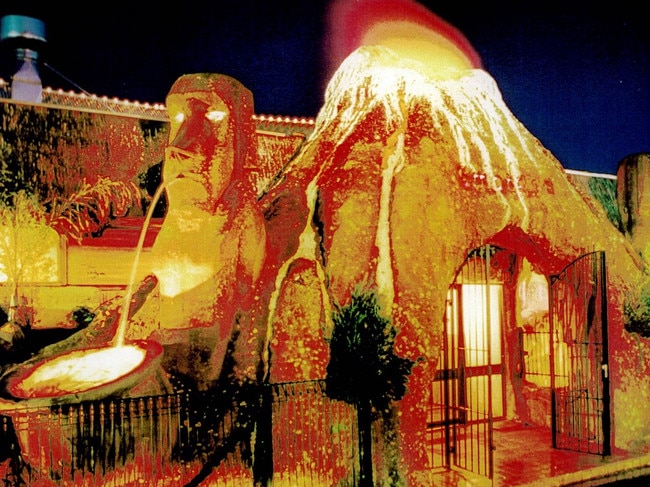
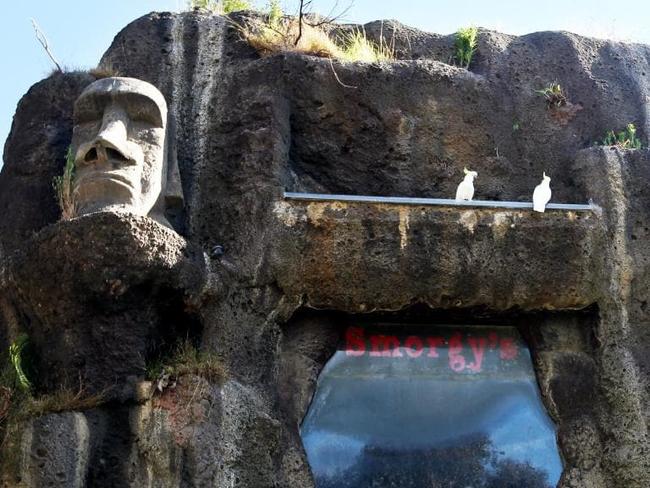
The relentless hustle and bustle was all in a day’s work for the Schwaiger family, who built the now defunct Smorgy’s restaurant into a chain spanning five locations: Burwood, Burwood East, Bundoora, Ringwood and Geelong.
Smorgy’s was a household name among Victorians between the nineties and noughties, with most seeing dining there as a rite of passage and the venue was an institution at the centre of many family gatherings.
However, as most know, all good times come to an end and the all-you-can-eat pioneer has now gone the way of other fellow lost Victorian diners, including Sizzler, The Swagman and Holly’s Cafe.
The Herald Sun was fortunate enough to speak with Rob Schwaiger – the son of late Smorgy’s founder Erich Schwaiger – to learn about how the buffet-style restaurant came about and whether Smorgy’s will make a comeback.
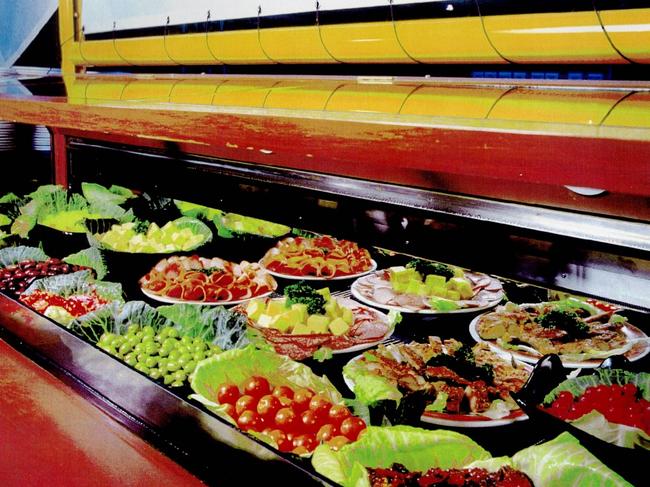
Early beginnings
The first Smorgy’s diners opened in the early 1990s, after Erich Schwaiger transformed his Island Trader restaurants in Burwood and Burwood East into the all-you-can-eat buffet.
In the years that followed, venues in Ringwood and Bundoora were also established, with former premier Jeff Kennett attending Smorgy’s last restaurant opening on the Geelong Cunningham Pier in 1996.
Smorgy’s promised its guests more than just a feast, by offering a rare dining experience visitors wouldn’t usually encounter at other restaurants at the time.
Each Smorgy’s diner was known for its own theme, ranging from an active volcano at its Bundoora venue, sea-themed animatronics at Geelong and a waterwheel at Burwood East.
The restaurants were in fact designed by renowned Melbourne architect Peter McIntyre, most famous for major works, including Parliament Station, The Jam Factory and the distinct River House in Kew.
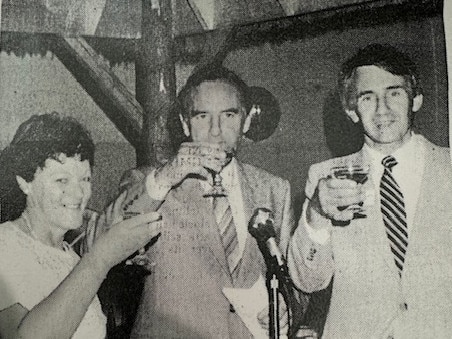
Rob Schwaiger helped his father rebrand Island Trader into Smorgy’s.
The 55-year-old said a downturn in the economy inspired his dad to reinvent the hospitality wheel by creating an all-you-can-eat restaurant, a dining style that wasn’t common in Melbourne at the time.
As for the unique themes at each restaurant, Mr Schwaiger said his father’s trips overseas inspired the designs.
“He travelled to Las Vegas for example, where he’d see the Mirage Casino and it had a huge volcano outside,” Ms Schwaiger told the Herald Sun.
“There would be a volcano show every (so often) and that would be the drawcard to bring people to the casino.
“(My dad) would come back and say: ‘I saw a volcano Rob, I’d like to build a volcano’, and back in those days we didn’t have the internet, we had Yellow Pages … so it would be my job to hunt around and build a volcano.”
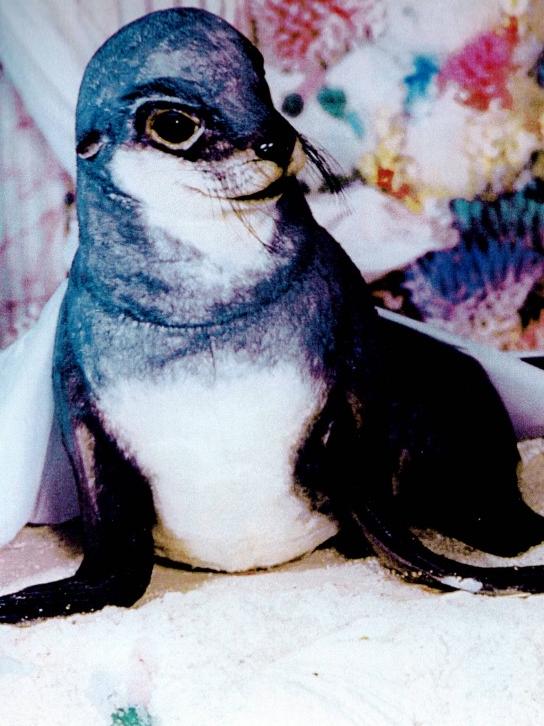
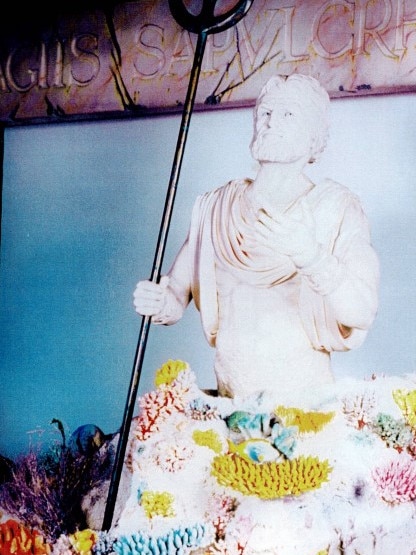
The volcano – which blew steam and fire – and a tropical rainforest became prominent features of the Smorgy’s Bundoora restaurant, one of the chain’s most popular venues.
Other features that spark fond memories for many Victorians are animatronics Salty the Seal and King Neptune which formed part of a show every half-hour at Smorgy’s Geelong.
Mr Schwaiger said he had to hire a range of people with varying professions to pull the show together, including museum staff, taxidermists, sculptors and voice over artists.
“Salty was huge,” he said.
“I can still remember a day when I was at the restaurant and was watching the show and a kid on a table not far from me yelled out ‘Salty has escaped’ and there was a seal swimming outside the restaurant.”
Path to success
So what made Smorgy’s such a hit?
An affordable, fun dining option is always popular.
But one unusual Smorgy’s twist was to have people pay a set price for a meal before they sat down, doing away with arguments over the bill at the end of a meal.
“My father was quite aware of the anxiety at the end of a meal because whoever was paying the bill wouldn’t quite know what it would cost and you couldn’t really control the purchases of table members … so if they rack up a bill you’d be stuck with it,” Mr Schwaiger said.
“But for Smorgy’s, we had a really nice thing where patrons would be able to pay at the front of the restaurant and that was it – unless you purchased drinks.”
Adults wishing to dine at the venue would pay $9.95 per head for lunch and $12.95 per head for dinner. Children aged 12 and above were charged $7.50 and those under 12 ate for $3.50.

Also contributing to the Smorgy’s success story was the Schwaiger family’s commitment to continually introducing new theming features and foods across its five restaurants.
“Every time new restaurants popped up people flocked to it because it was new and that eats into the viability of a business,” Mr Schwaiger said.
“So dad said he wanted to basically recreate a new restaurant on a regular basis, so that was where the theming came from.
“We introduced jungle themes and night skies and all sorts of things from a family perspective and also from a food perspective we added pancakes, donuts, pizzas and soft serve ice cream – a huge menu.”
Smorgy’s prided itself on its ability to cater for all culinary tastes, which meant even the fussiest guests would see something on the menu that they would enjoy.
“We also covered off all the food intolerances and then on top of that it was an adventure away from (Melbourne’s) concrete jungle with the basis being a Polynesian-type atmosphere with big palm trees, internal Polynesian huts and carvings,” Mr Schwaiger said.
“People saw it as an escape to Polynesia, Hawaii or Fiji and would feel relaxed and like they were on holiday.”
The end of an era
The Schwaigers ran one of Melbourne’s most beloved family restaurants for more than a decade before deciding to sell off the brand in 2003.
“My father wanted to retire. He asked me if I wanted to work weekends in addition to often working 50 hours Monday to Friday. I said no,” Mr Schwaiger said.
All five restaurants were sold to a single owner who operated them under the Smorgy’s brand for a number of years.
But the change in ownership appears to have marked the beginning of the end for the chain as Australians moved away from all-you-can-eat dining.
The Burwood location was rebranded as Volcano Joe’s but eventually closed.
The Ringwood location now houses Club Ringwood.
Geelong Smorgy’s made headlines when pier renovations forced it to shut its doors.
The waterside venue closed in April 2010 to make way for a string of new diners spearheaded by a group of business partners including former Geelong Cats skipper Cameron Ling.
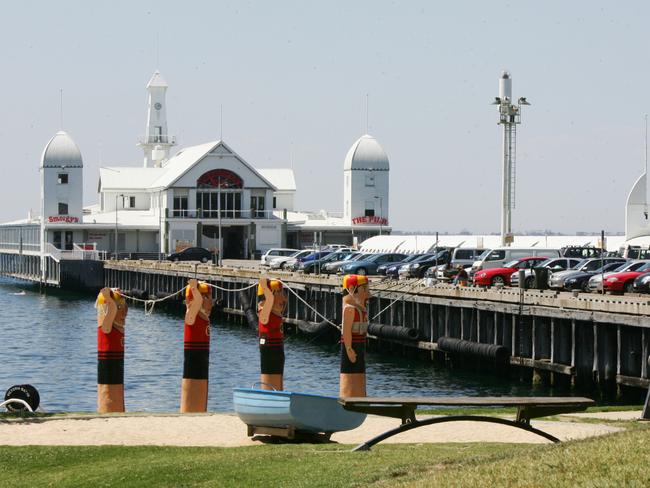
Meanwhile, a vacant restaurant which previously housed Smorgy’s in Bundoora also became the centre of attention when it caught on fire days after a five-tower apartment development was granted final planning approval to replace it.
Fire crews were called to the site just off Plenty Rd in September 2013 to contain a suspicious blaze which raged for hours, causing more than $500,000 worth of damage.
A decade on, apartment blocks now tower over the land where the Schwaiger’s active volcano and queues of keen diners once stood, with the site merely a memory of good food and fun times.
While Mr Schwaiger said it was sad to see the Smorgy’s era come to an end, he was grateful its existence ended on good terms.
“Things not working or Smorgy’s slowly fading into non-existence over time, that would have been more saddening to me than the show ending,” he said.
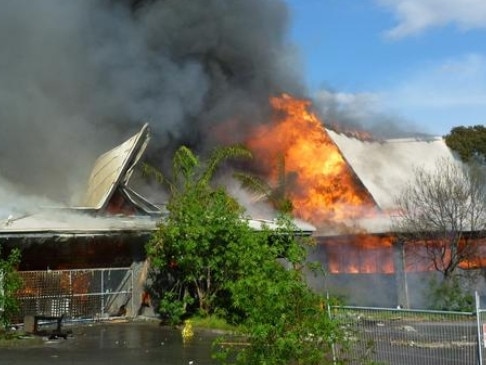
Could there be a comeback?
In the decade since Smorgy’s closure, fans have raised the question of whether the cherished family diner will ever reopen.
But Mr Schwaiger said while reminiscing was lovely, it was unlikely his family would bring Smorgy’s “back to life”.
“I don’t know if anybody would have the guts that my dad did to invest in his belief, like he had very strong beliefs about what would work and what wouldn’t work and I don’t think many people would (do that),” he said.
“Every day was a story. I met so many people and worked with designers, architects, counsellors, planners, and the state government. Everybody was involved.
“Dad provided me with the challenge and I’d go up and source the people that could bring it to fruition and he’d say more often than not, ‘bigger, more bang, we can’t half do it – if we half do it, it wouldn’t be successful and would be a waste of money. I’d rather invest in making it right’.”
For now, it looks like the closest Melburnians will get to revisiting Smorgy’s is through images, which are bound to spark many happy memories.
More Coverage
Originally published as Inside the success story of iconic all-you-can-eat restaurant Smorgy’s





